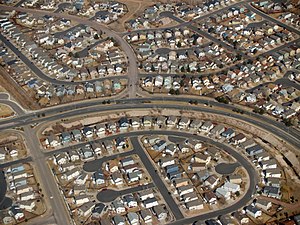I’ve been mulling over Josh Barro’s contention that cars should not be blamed for the failures of mass transit and his conclusion that planning and zoning is to blame. His basic contention is thus:
…the real culprit keeping Americans away from mass transit and inside cars isn’t subsidies; it’s planning and zoning. Cities impose barriers to density that limit the number of housing units and offices that can be located near buses and trains, which reduces mass-transit usage. These barriers also drive up property prices in areas near mass transit, penalizing transit-oriented living and encouraging people to live farther from urban cores, in areas where they have to drive. Meanwhile, cities often require builders to include a minimum number of parking spaces in new developments, depressing the market price of parking and further rewarding drivers.
A better approach would take advantage of the fact that proximity to transit increases property values. Cities should allow dense development, collect the property taxes that are generated, and use them to finance transit. Increased development also means more transit users and more fare revenues. But locals tend to oppose greater housing density; they also often demand parking minimums, since they don’t want to face too much competition for free on-street parking. An ironic result is that the very urban liberals who like to complain about suburban sprawl can end up encouraging it.
I concur with the larger argument about minimum parking requirements and value capture but I believe the argument falls short. While, I see how decisions made in land use policy at the local level distort the market equilibrium of supply and demand when it comes to parking, it is not as simple as to just blame the planner and the zoning code. The fact is, sprawl is baked into the cake of modern urban (and suburban) development. This makes the failure (or at least, under utilization) of mass transit easier and more likely. Here’s why:
Housing
We’ve been basically building one type of housing for the past 60 years: single family homes with attached garages, driveways and subdivisions modeled on the Plan for Riverside. When we’re not building single family homes, we’re building townhouses and apartment complexes with a similar auto-centric design. The fact is, despite the population growth in cities over the past 10 years and outside of new urbanism and rebuilding in existing neighborhoods, we have not really built any new greenfield communities that resembles any pre-depression urban form.
Finance
Even if we were to start building communities in greenfield locations with high densities that could support transit, like residential development that was built-in the streetcar era, we still likely could not build these communities without adding significant amounts of parking or by limiting density. This is in large part because of the financial institutions that provide funding for these developments do not properly know how to value these assets. Banks like to finance products in which they know and know well. The suburban form of development is one that banks have been financing for 60 years.
Other Government Agencies

This kind of development is illegal under most zoning codes throughout the U.S. However, there are a variety of other factors at play. (Photo credit: Wikipedia)
Let’s say that we can get the financing to build an urban development along new urbanism guidelines, for example. Let’s say we’ve got the zoning in place and the transit worked out. We still might not be able to build the dense, transit-oriented community we want due to the policies of other government agencies. For example, fire departments have been opposed to new urbanism developments due to the narrow streets within these developments. It turns out that the fire trucks have become too big to fit down these streets or the perception is such that it would be too much of an obstacle to navigate.
It may come as a surprise that transit agencies might also be unfriendly to transit-oriented development, particularly if the predominant mode of access to their stations is via car. The transit agency would want to make sure its commuter parking is located as close to the station as possible. This is a common tension when building transit-oriented development.
Commerce

Development like this, in the transit rich, dense, urban neighborhood of Lincoln Park in Chicago. Even in dense cities, retailers insist on providing enough parking to “access” their stores. (Photo credit: YoChicago via flickr)
Retailers, particularly of the big box and other large format varieties, often won’t build in town without sufficient parking. When I was in grad school, the adjunct professor for my land use planning course told us that when Chicago was first redeveloping the North/Clybourn corridor from industrial uses to retail, the city wanted far less parking than is currently there. However, the developers balked, insisting that they needed the parking so that customers could access their stores. Of course, there was already 3 bus lines and the CTA Red Line station right there.
As a transportation planner, I appreciate that Barro is trying to explain the nexus between transportation and land use. Land uses drive transportation decisions of whether to take mass transit or cars. But so do a lot of factors beyond just the zoning code and minimum parking requirements.


